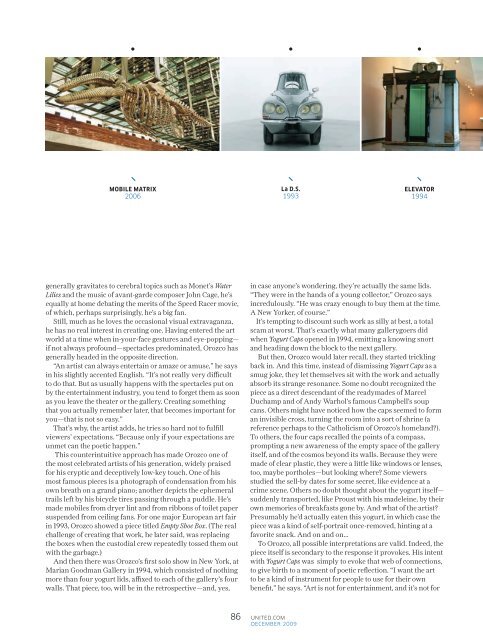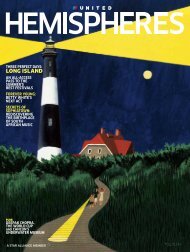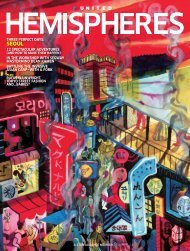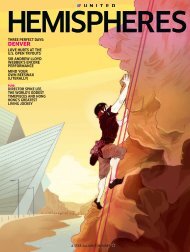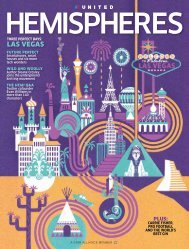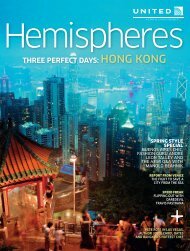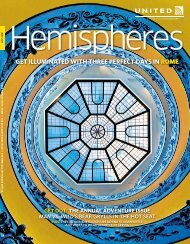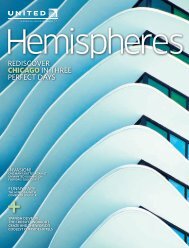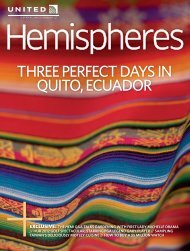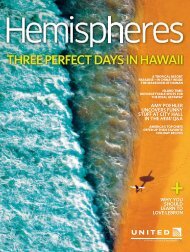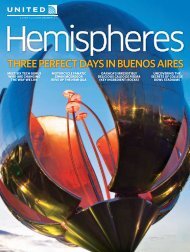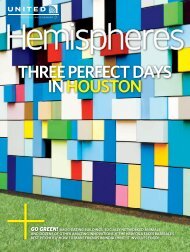Create successful ePaper yourself
Turn your PDF publications into a flip-book with our unique Google optimized e-Paper software.
MOBILE MATRIX<br />
2006<br />
generally gravitates to cerebral topics such as Monet’s Water<br />
Lilies and the music of avant-garde composer John Cage, he’s<br />
equally at home debating the merits of the Speed Racer movie,<br />
of which, perhaps surprisingly, he’s a big fan.<br />
Still, much as he loves the occasional visual extravaganza,<br />
he has no real interest in creating one. Having entered the art<br />
world at a time when in-your-face gestures and eye-popping—<br />
if not always profound—spectacles predominated, Orozco has<br />
generally headed in the opposite direction.<br />
“An artist can always entertain or amaze or amuse,” he says<br />
in his slightly accented English. “It’s not really very diffi cult<br />
to do that. But as usually happens with the spectacles put on<br />
by the entertainment industry, you tend to forget them as soon<br />
as you leave the theater or the gallery. Creating something<br />
that you actually remember later, that becomes important for<br />
you—that is not so easy.”<br />
That’s why, the artist adds, he tries so hard not to fulfi ll<br />
viewers’ expectations. “Because only if your expectations are<br />
unmet can the poetic happen.”<br />
This counterintuitive approach has made Orozco one of<br />
the most celebrated artists of his generation, widely praised<br />
for his cryptic and deceptively low-key touch. One of his<br />
most famous pieces is a photograph of condensation from his<br />
own breath on a grand piano; another depicts the ephemeral<br />
trails left by his bicycle tires passing through a puddle. He’s<br />
made mobiles from dryer lint and from ribbons of toilet paper<br />
suspended from ceiling fans. For one major European art fair<br />
in 1993, Orozco showed a piece titled Empty Shoe Box. (The real<br />
challenge of creating that work, he later said, was replacing<br />
the boxes when the custodial crew repeatedly tossed them out<br />
with the garbage.)<br />
And then there was Orozco’s fi rst solo show in New York, at<br />
Marian Goodman Gallery in 1994, which consisted of nothing<br />
more than four yogurt lids, affi xed to each of the gallery’s four<br />
walls. That piece, too, will be in the retrospective—and, yes,<br />
86<br />
La D.S.<br />
1993<br />
ELEVATOR<br />
1994<br />
in case anyone’s wondering, they’re actually the same lids.<br />
“They were in the hands of a young collector,” Orozco says<br />
incredulously. “He was crazy enough to buy them at the time.<br />
A New Yorker, of course.”<br />
It’s tempting to discount such work as silly at best, a total<br />
scam at worst. That’s exactly what many gallerygoers did<br />
when Yogurt Caps opened in 1994, emitting a knowing snort<br />
and heading down the block to the next gallery.<br />
But then, Orozco would later recall, they started trickling<br />
back in. And this time, instead of dismissing Yogurt Caps as a<br />
smug joke, they let themselves sit with the work and actually<br />
absorb its strange resonance. Some no doubt recognized the<br />
piece as a direct descendant of the readymades of Marcel<br />
Duchamp and of Andy Warhol’s famous Campbell’s soup<br />
cans. Others might have noticed how the caps seemed to form<br />
an invisible cross, turning the room into a sort of shrine (a<br />
reference perhaps to the Catholicism of Orozco’s homeland?).<br />
To others, the four caps recalled the points of a compass,<br />
prompting a new awareness of the empty space of the gallery<br />
itself, and of the cosmos beyond its walls. Because they were<br />
made of clear plastic, they were a little like windows or lenses,<br />
too, maybe portholes—but looking where? Some viewers<br />
studied the sell-by dates for some secret, like evidence at a<br />
crime scene. Others no doubt thought about the yogurt itself—<br />
suddenly transported, like Proust with his madeleine, by their<br />
own memories of breakfasts gone by. And what of the artist?<br />
Presumably he’d actually eaten this yogurt, in which case the<br />
piece was a kind of self-portrait once-removed, hinting at a<br />
favorite snack. And on and on...<br />
To Orozco, all possible interpretations are valid. Indeed, the<br />
piece itself is secondary to the response it provokes. His intent<br />
with Yogurt Caps was simply to evoke that web of connections,<br />
to give birth to a moment of poetic refl ection. “I want the art<br />
to be a kind of instrument for people to use for their own<br />
benefi t,” he says. “Art is not for entertainment, and it’s not for<br />
UNITED.COM<br />
DECEMBER <strong>2009</strong>


